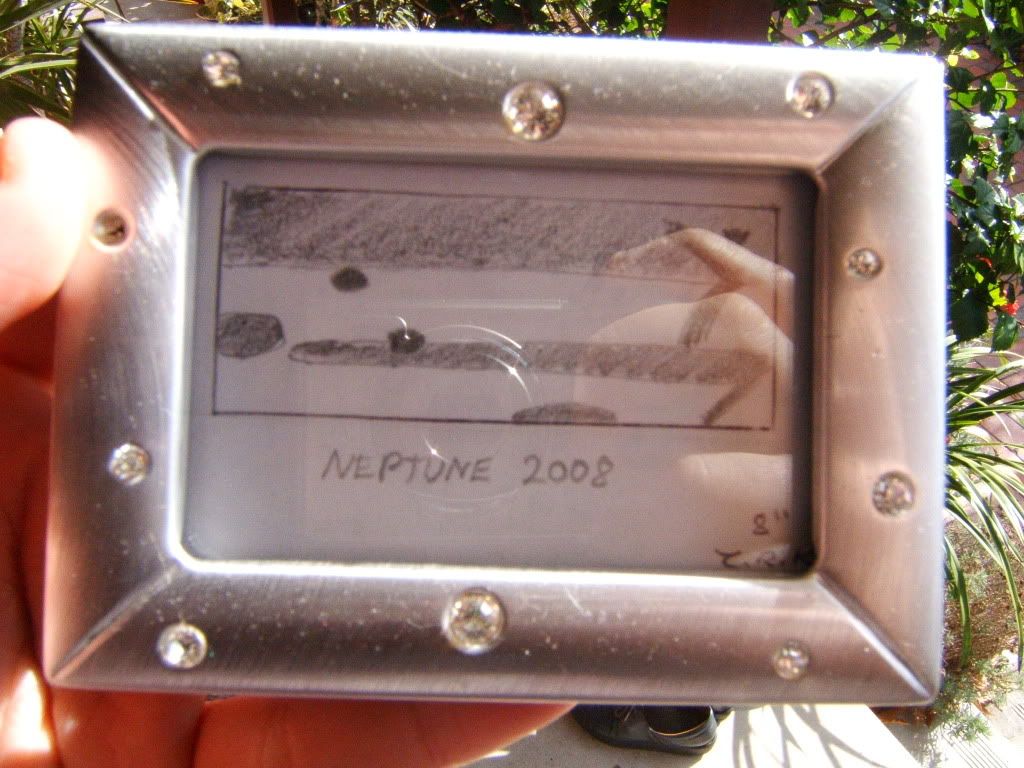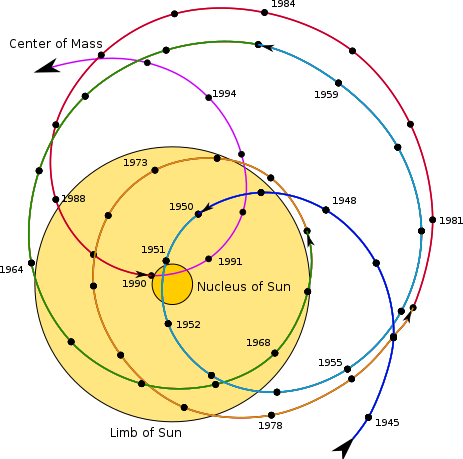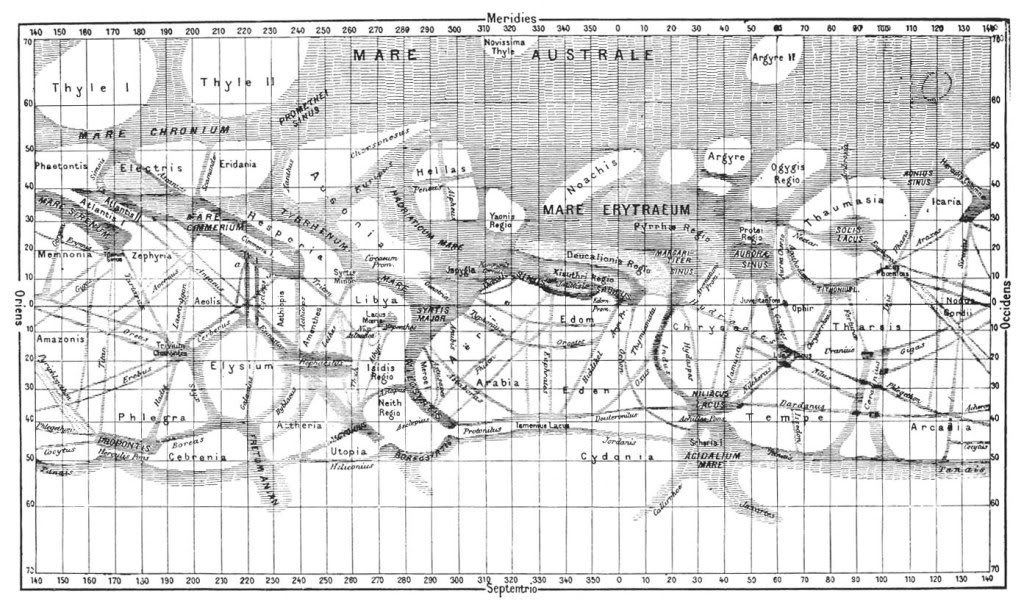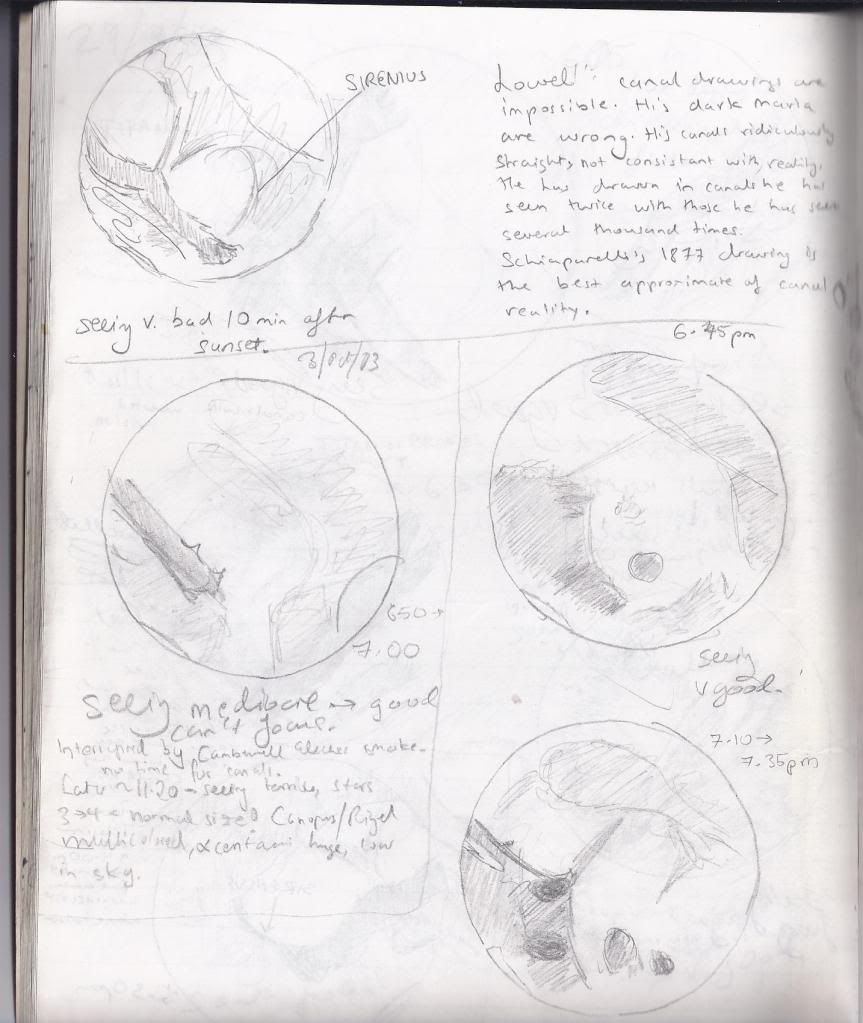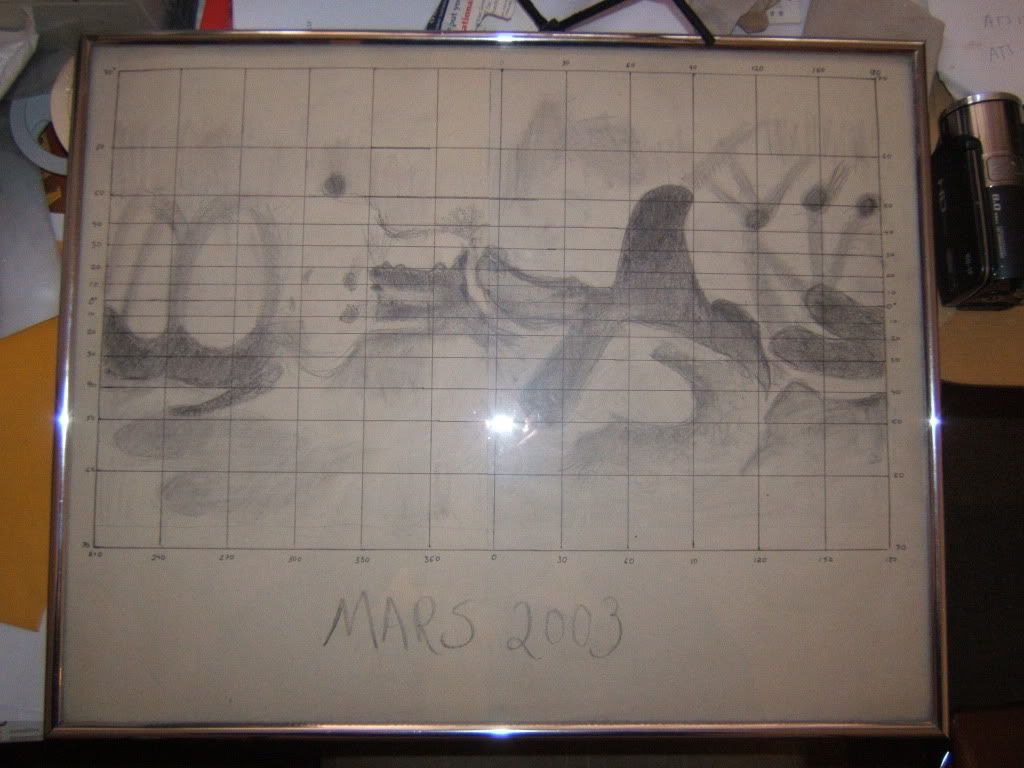We are all familiar with visual images of Neptune. It is a relatively featureless planet, save for a few dark storms and the occasional white patch. Telescopic views in even the largest telescopes from Earth show a tiny blue ball. Even the view from the Hubble Space Telescope, (below), where the atmosphere is not interfering, show a pixellated ball.
Can one really see features on Neptune with a humble telescope on Earth? Surprisingly, the answer seems to be 'yes'. Both Uranus and Neptune show three prominent bands to the eye, but not to every eye. The effect may be an infrared one - the Purkinje effect. Quite simply, some eyes are more sensitive to red light than are other eyes. Variable star observers may thus see red stars as brighter than they actually are. I hypothesise that this effect may be the reason that many observers in the past saw dark red/brown canals on Mars, whereas others did not. The domain of the canals may well be the domain of infra-red light.
In fact, the various bands do show up in infrared rather well. Uranus in infrared, (below) looks like Neptune in visible (above). It may thus be considered that Uranus is a lower-energy emitter than Neptune and much the same system. We also note that the outer ring is most highly energised... (we would hypothesise with electrical energy), very much as is the case with Saturn's outer ring, which is braided like a woman's hair, and thus highly electromagnetically charged.
The infrared picture vindicates visual observations of Uranus which indicated that it did in fact have banding, a 'myth' which was supposedly dispelled when the featureless pictures from Voyager II came out thirty years ago. Here are some 1950s drawings of Uranus and Neptune which I scanned out of an old book. (Golden Treasury of Natural History, by Bertha Parker). As can be seen, banding is shown on drawings by visual observers, on the outer planets. In other words, the viewers (those who were capable of doing so), were seeing the elements of Uranian weather at the boundary of the infra-red wavelength.
Banding on Uranus is described in the 'Uranus' article in Encyclopedia Britannica, by Chicago University Press, 1972 edition. It is a kind of 'suppressed knowledge' these days, among books which will tell you there is nothing to see on these outer planets in a telescope. This is one of those mythical lies which grows legs of its own and spreads from book to book like a virus as no-body is willing to go against the grain. To the content of the Encyclopedia:
"Uranus when viewed through a large telescope appears as a bluish-green disk about 4in. in diameter. A white central streak and some dusky bands have been noted, but no definite spots from which the rotation period could be determined." (vol. 22, p. 784.) The encyclopedia goes on to say that bands were observed in 1870. This is on a planet with allegedly no surface detail.
I believe that observation can sometimes bring out more detail than these photographs can show. I have to be very careful with this statement as it can quite obviously seem rather problematic unless it is appropriately clarified. The difference between photographs and the human eye is that the eye has a mind behind it when it forms a notion of what an image looks like. Conventionally, the eye must look at a planet for a long time and 'learn' what it looks like. If we want a photograph, by comparison, we take many images of that picture and then use software to stack the images. This provides us with a high-resolution image which may or may not display reality. Stacking is used all the time for planetary imaging and has replaced many long exposure techniques of the past which created much fuzzier images.
'Learning' is a form of mental stacking. The mind is infinitely complex. It stacks images when it tries to learn what something looks like. Lowell's canals are an example of this. Although the canals themselves may not be present, the use of stacking allowed Lowell to perhaps perceive features such as strings of craters, etc. In 2008 when I finally located Neptune in the telescope, I was fortunate enough to have had some very steady seeing conditions over many nights and proceeded to make many sketches of that planet. My sketches didn't show much at all... a ball... with a streak down one side.... the shaky star-like image could show little else. Eventually I had a collection of these images in my observation book and began to try to piece them together. I drew two equatorial belts onto a map the planet and then begin to fill the features of my notebooks in the way they could best 'fit'. The result is quite hypothetical, but it remains, one of the few maps of Neptune ever attempted from planet Earth.
My hypothetical map of Neptune's surface. There are many ways of arranging the dots and patches I recored. This is one way:
How was this map created? Using 100x magnification, and an 8" scope. You heard me right. This is a pretty standard telescope. At only 100x the planet is a mere pinprick of blue and a barely-discernible disk. Why not use a larger magnification? Perhaps this might be a worthwhile proposition in a much larger telescope, but at only 8", it's not worth attempting.
Then there is the problem that scopes above 10" inches show 'too much' resolution. This leads to a generally poorer view of planets as the advanced scope begins to pick up the individual air currents as interference patterns. A smaller scope will thus show a planet with less detail, but for a longer period of steadiness, and a larger scope will show more detail for infuriatingly short moments between longer moments of atmospheric instability.The conundrum echoes the words of Percival Lowell: 'large telescopes are ill suited for planetary observation'. Thus we see that large scopes are not actually required for high-level observation. The brain is the primary tool for observation and if it can learn then it can see.
When one observes for drawing, one must mentally stack images in one's mind before committing them to paper. This can perhaps help to overcome the theoretical Dawes Limit for resolution, which is more like a rule of thumb than an actual law of physics for observers, as it does not take into consideration that we see with our minds as well as with our eyes.
Observing is a skill which is learned by a long period of observation and drawing. Are filters required? I have never used filters and the best planetary observers tend to agree that the same image is present without the filter. The filter just cuts out certain wavelengths which allow our brain to see the image with greater clarity. So are they useful? For any observer, I would say 'yes', give them a try. Like anything, they are a learning tool to help us learn a lot faster which features are present. On Mars they can be very useful for bringing out the clouds and polar caps. On Jupiter and Saturn they are also very useful for bringing out detail in the belts and making the great red spot, (It's been white the past few years), more visible. Overall however, they add more glass to the focal system, and in doing so, reduce and worsen the quality of the incoming image. Cheerio!



